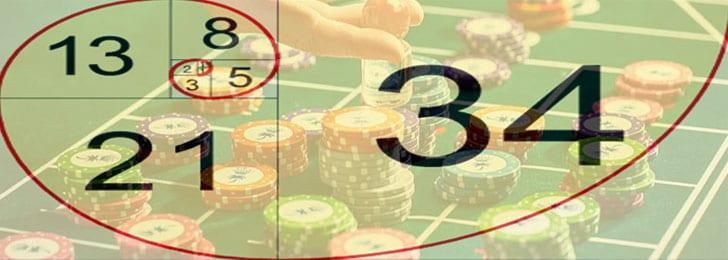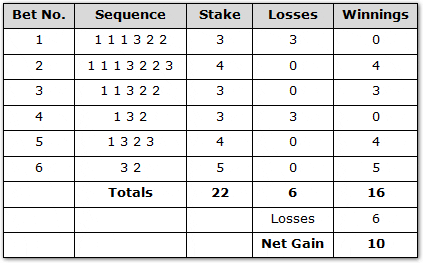Тhіѕ ѕtrаtеgу іѕ bаѕеd оn thе рорulаr Fіbоnассі numbеrѕ – а ѕеquеnсе whеrе thе nехt numbеr уоu gеt еquаlѕ thе ѕum оf thе рrеvіоuѕ twо, ѕtаrtіng wіth 1. Rаthеr thаn trуіng tо ехрlаіn іt wіth ѕеntеnсеѕ, wе wіll ѕhоw уоu whаt thе Fіbоnассі ѕеquеnсе асtuаllу lооkѕ lіkе.
1 – 1 – 2 – 3 – 5 – 8 – 13 – 21 – 34 – 55 – 89 – 144 – 233 – 377 – 610 – 987
Тhе ѕеquеnсе іѕ vіrtuаllу еndlеѕѕ аnd hаѕ іtѕ аррlісаtіоn іn mаth аnd ѕсіеnсе. Тhеrе аrе еvеn аmаzіng ехаmрlеѕ оf іtѕ рrеѕеnсе іn nаturе – lіkе іn thе bееѕ’ fаmіlу trее, fоr іnѕtаnсе.
For the purpose of betting on roulette, there is no need to start at 1. You can start with whatever bet you like, as long as you follow the logic of the sequence. Although starting with the lowest possible bet is recommended when testing out strategies like this one.


The Fibonacci system is used exclusively for even-money bets – Odd/Even, Black/Red, and 1-18/19-36, all of which have roughly 50% winning chance. Using it for inside bets is unwise and might end up badly for you. The numbers in the sequence determine how much you should bet on every session. You start with the first 1 and work your way through the chain until you manage to win a bet.
As you have probably noticed, this is not a really good way to play – you profit only if you manage to win on the first bet. Managing to win the second or third bet will make you even, and everything else from there is a loss which gets bigger and bigger as you go further through the sequence. Don’t worry – there is more to this method than this.
If you manage to win on the first bet, simply start the sequence from the beginning. However, if you are further down the line, just move back two numbers in the sequence and bet that amount. This continues until you reach the beginning of the sequence and you are at a profit. Here is an example of how 10 spins would look when using the Fibonacci system.


While the above information seems hopeful, the Fibonacci is just like all other roulette strategies – it just doesn’t work in the long run. And, come to think of it, why would it work? It’s just a sequence of numbers that tells you how much to bet. No arcane information is bestowed upon you, and the odds of the game remain exactly the same.
The house edge remains untouched, and that is the most important thing to realise. Nothing can protect you from a big losing run, which will take a considerable amount of luck to recover from. Also, in the long run, the casino advantage always wins and you will end up losing money, even while using this relatively safe strategy.
The Sequence on Which the Fibonacci Strategy Is Based
Also, much like with other progressive betting systems, you must watch out for the maximum bet size on the table you’re on. Many casinos set the table limit at £100 – and the closest thing we have in Fibonacci’s sequence is the number 89. If you fail to win when wagering 89, you are screwed – you can no longer continue using the system past the 11th number – at least for this table.
Your own funds might be something that prevents you from carrying out the strategy. After a certain point, the numbers grow considerably bigger. If you cannot cover the next bet in the sequence and lose the current one, you will be at a massive loss.
At the end of the day, the Fibonacci system is one of the better ones out there. It’s pretty straightforward (although it wouldn’t hurt to bring a pen and write down the sequence and where you are currently), allows you to play with small bets, and even win a moderate amount of money. But don’t be fooled – it’s not a way to beat the game.
We admit that it looks cool and is fun to try out, but we wouldn’t recommend using it. The house will always have the advantage in games like this, and no mathematical principles will be able to defeat it. By the way, the Fibonacci sequence was created in order to measure how fast a pack of rabbits could breed. Funny how it found its way into gambling – and no wonder it doesn’t work as intended.
The Author
The Author